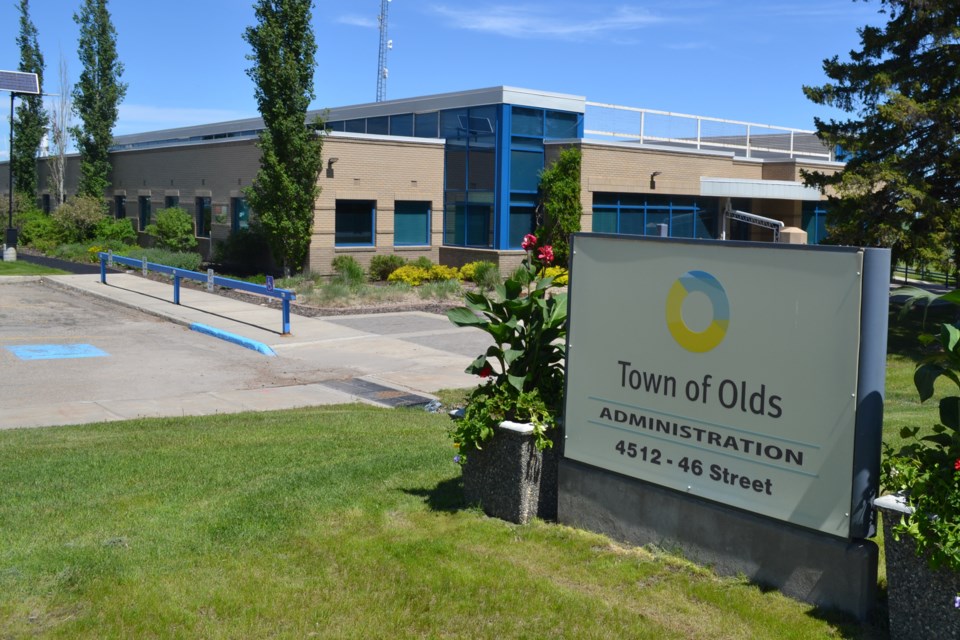OLDS — As council begins to hammer out its 2022 budget this spring, a survey on what town residents see as spending priorities is pretty contradictory.
Councillors received those results late last year.
In almost every category: operational services, protective services, community services, recreational services as well as parks and trails, most respondents said town officials should keep services at the level they’re currently at.
However, when those who wanted to see service levels increased were asked if they would be willing to pay higher taxes to achieve that goal, they said ‘no.’ Or, some said that extra level of service should be obtained by cutting elsewhere in the budget.
It was a bit different with economic development though. Fifty-three per cent of respondents said service in that area should be increased, although again, nearly 57 per cent of those who wanted more spending in that area said taxes shouldn’t be increased to make that happen.
The survey was conducted from Aug. 31, 2021 to Oct. 11, 2021.
As she presented the results, finance director Sheena Linderman said they’re much the same as they have been over the past five years.
“Last year was all keep the same. And then this year again, overwhelmingly it’s keep the same,” she said.
Coun. Heather Ryan pointed out the contradictory nature of the information.
"You have people who want to increase things and they don’t want to pay for them. You can't have it both ways,” she said.
Nonetheless, Ryan said it’s good information for councillors to keep in the back of their minds as they hammer out the budget.
Linderman said in terms of priorities, the top three departments according to respondents are protective services (which includes RCMP and the fire department); operational services, which includes things like street and road maintenance; and economic development.
She said last year, operational services was the top priority.
Linderman said 58 per cent of respondents said they get fairly good value for their tax dollars.
“That is exactly the same as at 2020, which is a good indicator,” she said.
This year, 155 people responded to the survey, down from more than 200 last year and 315 in 2019.
According to legislative clerk Marcie McMillan, there are at least 7,270 eligible voters in Olds.
Given that fact, Coun. James Cummings wondered if 155 respondents is a useful slice of opinion.
He said such surveys often generate responses from people who feel strongly one way or the other about a given question and those who are in the middle aren’t accurately represented.
“It’s one data point,” community services director Doug Wagstaff said. “There will be many other pieces of data that you get.”
Wagstaff said engaging with the public in this manner is still worthwhile.
He said it gives councillors and administrative staff opportunities to find “gold nuggets” of feedback, like the fact this year that respondents appear to regard economic development as a priority.
“So we’re not going to ignore that. It’s going to be one of the pieces that we take into consideration. But again, it’s just one data point,” he said.
It was suggested that perhaps an online survey isn’t the best way to garner public opinion as those who don’t have access to computers would be excluded from participating.
Wagstaff conceded that point but said it’s “a vast improvement” over the amount of feedback town staff received by doing public engagements on budget priorities.
“We would do them here or at the Legion and we would – and this is not an exaggeration – have a person or two come out for an engagement in person. So comparatively, this has been an improvement,” he said.
Coun. Darren Wilson wondered why the response rate has fallen so much in the past few years. He described that decline as a “red flag.”
“I’m not sure what that represents and reflects: temperature of the day, events going on in the community or what-have-you,” Wilson said. “Did COVID exhaustion play a role? Did the election – on the eve of the election – did that play a role?”
Wagstaff said the fact that the Oct. 25 municipal election was held so close to the survey period may indeed have been a factor.
He said town staff kept the imminence of the election in mind.
“We didn’t go out as aggressively this time as we have in previous engagements to get peoples’ involvement, because we were very conscious of the fact that we were essentially in an election period. So that probably played a role,” Wagstaff said.
“I think the biggest part, more than anything, is the fact that we didn’t use the same exact tactics that we’ve used in some previous ones.”



